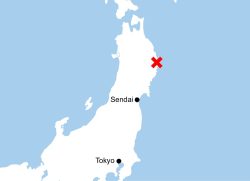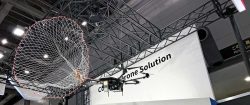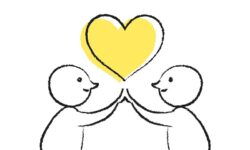17:37 JST, August 12, 2024
Automated external defibrillators (AEDs) are now seen more frequently at stations, airports and other locations, but many people likely do not know how to use them. It is hoped that their use will be promoted to create a society in which as many lives as possible can be saved.
An AED is a medical device designed to treat heartbeat irregularities with electric shocks applied to the chest.
If a person collapses after their heart suddenly stops, the chances of saving the person’s life increase if someone who happens to be nearby performs cardiopulmonary resuscitation (CPR) quickly. There have also been many cases in which the use of AEDs helped save people’s lives.
Previously, only doctors could use AEDs. However, the ban on their use by the public was lifted in 2004 because it is believed that using an AED in the early stage before an ambulance arrives improves the survival rate. Currently, an estimated 690,000 AEDs have been installed nationwide.
Nevertheless, it is difficult to say that AEDs have been used widely by ordinary people.
While 29,000 people experiencing cardiac arrest were transported to hospitals in 2022, AEDs were used by ordinary people for only 4% of them. This appears to be attributable to people’s hesitation about being involved in someone’s life-or-death situation, as well as anxiety about using an unfamiliar device.
However, AEDs are truly easy to use. When turned on, the device tells the user what actions need to be taken.
It is important to train people in advance about what kind of devices AEDs are so that they can actually use them.
In recent years, education on AEDs and CPR techniques has been included in the Courses of Study for junior high and high schools, and training sessions on how to use AEDs have been held at schools.
In one case, when a teacher collapsed during a club activity, junior high school students who had recently received such training at their school moved quickly to use an AED and saved him.
If people are exposed to AEDs from a young age, more people will be able to use them without hesitation in times of emergency. It is hoped that training sessions will be expanded at schools.
Some companies have also trained employees to be well versed in how to use AEDs and created opportunities for them to teach others inside and outside their companies.
Occurrences of sudden cardiac arrest do not happen only to people with chronic heart conditions. Caution is also required for healthy people engaging in strenuous exercise.
It is crucial for organizers of sporting and other events to determine in advance the procedures for making calls to the 119 emergency telephone number and using an AED, among other steps, in order to prevent panic when a medical emergency occurs.
While the number of AEDs installed has increased nationwide, most of them are indoors. To make AEDs available also at night and on holidays, setting up more of the devices outdoors and at stores that are open 24 hours a day is a measure that should be considered.
(From The Yomiuri Shimbun, Aug. 12, 2024)
"Editorial & Columns" POPULAR ARTICLE
-

Artificial Intelligence Expands Possibilities for Foreign Language Learners
-

Build Intellectual, Physical Strength, As Well As Communicative Power / Japan Should Move from Beneficiary to Shaper of World Order
-

Global Economy in Turmoil: Prevent Free Trade System from Going Adrift / Risks to Financial Markets Must Be Heeded
-

Japan-China Strain Set to Persist as Beijing Officials Self-Interestedly Bash Tokyo; Takaichi Unlikely to Back Down
-

French and German Ambassadors to Japan Call for Democracies to Unite in Defense against Russian Disinformation
JN ACCESS RANKING
-

As Chinese Tourists Shun Japan, Hotels and Stores Suffer
-

Osaka-Kansai Expo’s Economic Impact Estimated at ¥3.6 Trillion, Takes Actual Visitor Numbers into Account
-

Japan Govt Adopts Measures to Curb Mega Solar Power Plant Projects Amid Environmental Concerns
-

BOJ Gov. Ueda: Highly Likely Mechanism for Rising Wages, Prices Will Be Maintained
-

Economic Security Panels Debate Supply Chains, Rare Earths; Participants Emphasize Importance of Cooperation Among Allies




















